
Seacology Prize Recipients


2023 | 2022 | 2021 | 2020 | 2019 | 2018 | 2017 | 2016 | 2015 | 2014 | 2013 | 2012 | 2011 | 2010 | 2009 | 2008 | 2007 | 2006 | 2005 | 2005 | 2004 | 2003 | 2002 | 2001 | 2000 | 1999 | 1998 | 1997 | 1996 | 1995 | 1994 | 1993 | 1992
Dr. Jonah Ratsimbazafy
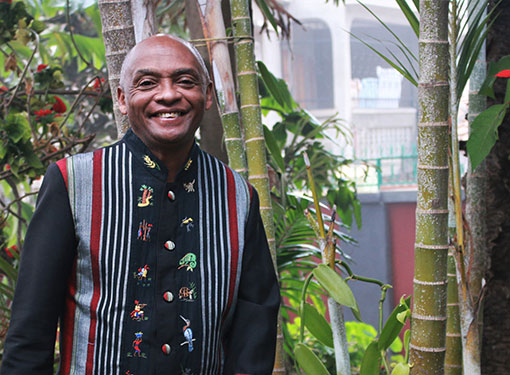
Dr. Ratsimbazafy, whom a colleague calls “a force of nature for conservation in Madagascar,” grew up as a city boy. But the first time he saw one of his island’s iconic lemurs—those big-eyed, long-tailed primates that dance through the trees—it was love at first sight. On the forest treks where he first encountered lemurs, he also saw traps set by people hunting them for meat. He also saw that lemur habitat was rapidly being destroyed, and that many species faced the very real possibility of imminent extinction. That led him to his life’s goal: “I feel a personal responsibility towards ensuring no more lemurs go extinct.”
Dr. Ratsimbazafy’s conservation efforts take several forms. His research contributes to the store of knowledge about lemurs, providing information necessary for effective management. He is also an outspoken proponent of policies that will save Madagascar’s lemurs. That makes him unpopular with corrupt politicians, powerful mining and timber interests, and criminal enterprises. His life has been threatened more than once.
Finally, he is a tireless grassroots campaigner for Madagascar’s precious ecosystems. He could have a job anywhere, but he returned to Madagascar, one of the world’s poorest nations, to work on community conservation. He wants the Malagasy people, not outsiders, to take responsibility for protecting the island’s unique biodiversity. The NGO he established, which now has more than 20 Malagasy staff, works with desperately poor communities to explain conservation and teach alternative livelihoods. He talks to young schoolchildren (lemur puppets in hand), university students, and illiterate farmers to convince them of the need to act now—before it’s too late.
Kevin Iro
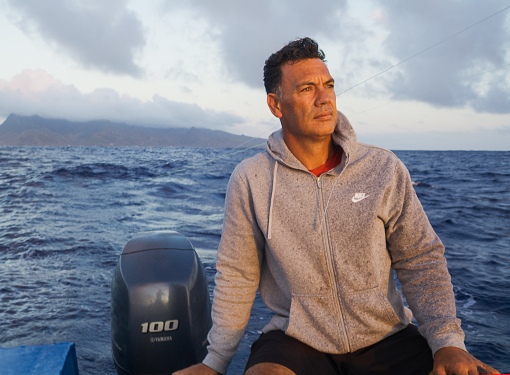
Kevin Iro, an acclaimed athlete from the Cook Islands who championed the establishment of the world’s largest multi-use marine park, received the 2022 Seacology Prize.
Iro’s exceptional rugby career spanned decades and countries. Nicknamed “The Beast,” Iro was a dominating presence on the pitch, playing for teams in New Zealand, Australia, and the United Kingdom from the late 1980s through the early 2000s. He went on to coach for the Cook Islands’ national team.
Returning to his home country after his retirement from professional rugby, Iro was alarmed by the environmental damage he saw. The Cook Islands’ once-spectacular coral reefs had deteriorated, and fisheries had been depleted, threatening local livelihoods and traditional fishing culture. So Iro set his sights on a new goal: protecting the vast ocean surrounding the islands. He soon found an ally in then-Prime Minister Henry Puna, and after years of advocacy, Iro’s vision materialized in the form of Marae Moana (“Sacred Ocean”).
The ambitious plan, record-breaking in its scope, implements new conservation rules for the entirety of the country’s nearly 2-million-square-mile exclusive economic zone, an expanse of ocean roughly the size of Mexico. Most important, it bans commercial fishing and seabed mining within a 50-mile radius of each of the country’s islands. The plan was approved by the country’s parliament in a unanimous vote in 2017.
Iro’s reputation and advocacy were key to creating Marae Moana. He has since served as the ambassador for Marae Moana, frequently traveling the country to meet with communities, traditional leaders, and students across the sprawling island nation to spread the word about the importance of its success.
Iro’s work aligns closely with our own. After meeting with Iro and Puna in early 2020, Seacology pledged our support for the reserve. We know that in order for conservation to be successful, local communities must be supportive and engaged. This is especially true in a huge but sparsely populated country like the Cook Islands, where there are limited personnel and resources for enforcement. Working with Marae Moana’s management team, the Cook Islands Voyaging Society, local artists, traditional leaders, schools, we have helped publicize Marae Moana’s new regulations through a nationwide outreach campaign.
Our initiative has funded a student art contest to design the uniforms worn by park staff, voyages in traditional sailing crafts between the islands, radio programs and podcasts, and a mural celebrating Marae Moana that will be the longest in the South Pacific when it is complete. All of these efforts reinforce the path to sustainability that Iro’s vision has begun.
Saw John Aung Thong
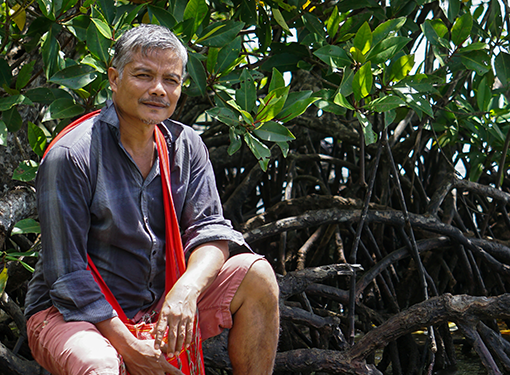
A committed advocate for the environment and culture of India’s Andaman Islands, Saw John Aung Thong, is the recipient of the 2021 Seacology Prize. Saw John, a member of the islands’ Karen community, exemplifies Seacology’s vision of locally led island conservation.
Hundreds of miles east of the Indian subcontinent, the Andaman and Nicobar Islands are home to rich ecological and cultural diversity. The tropical waters surrounding the islands support countless marine species, including 200 types of coral, and a world-renowned and culturally important shellfish market. Roughly 80% of the islands’ surface is covered with evergreen forest, populated with hundreds of species of birds, mammals, and insects, many found nowhere else in the world. Mangrove trees ring the coast.
The Andamans’ unique location, between mainland India and Southeast Asia, has made the archipelago home to myriad ethnic groups since the first people arrived thousands of years ago. The Karen people came from Myanmar (Burma) beginning in the 1930s, when the islands were part of the British Empire, and today make up a small but significant part of the population of North and Middle Andaman Islands, with about 2,000 people scattered across several villages.
With such low numbers, the future of Karen culture in the Andamans is uncertain. Webi, Saw John’s home village, is the site of only one of two schools in India that teach the group’s language. Cultural knowledge like that passed down to John by his father, one of the last traditional healers in the Andamans, is at risk of being lost. When large-scale commercial development began to arrive on the islands, Saw John grew alarmed as the strong ties between the Karen and their heritage and environment began to erode. For nearly three decades, he’s been working to protect the environment, develop sustainable livelihoods for members of his community, and repair fraying cultural ties.
Starting in the 1990s as a janitor, he worked his way up to Operations Director of the Andaman and Nicobar Environment Team (ANET), supporting field research to discover new endemic species on the islands, and other projects. ANET has led initiatives that helped local people grow low-impact crops and greener building materials. After the devastating 2004 Indian Ocean tsunami, the group was instrumental in efforts to protect and restore mangroves around the islands, shielding coastal communities from future storms.
With ANET, Saw John helped found Andaman Karen Crafts (AKC), a local cooperative that teaches skills in traditional Karen handicrafts and cuisine, so local people can produce and sell traditional goods. In a plant nursery established by AKC, he has shown community members how to cultivate and use the plants that form the foundation of Karen recipes and traditional medicine. Seacology witnessed Saw John’s passion for his people and their islands when we worked with ANET and AKC on our 2014 project in Webi Village.
“Saw John is proud of his Karen cultural and environmental heritage and gives back with action rather than fanfare,” said field representative Vineeta Hoon, who first met him more than two decades ago. “When I think of him, these words come to mind: Unassuming, quiet, compassionate, kind.”
When it comes to advocating sustainable ecotourism, Saw John leads by example. He converted part of his family’s home, which sits on a small organic farm, into an inviting homestay for visitors to the isolated islands. The first ecotourism destination of its kind in the Andamans, Koh Hee (“Island Home”) also serves as a comprehensive introduction to Karen culture for its guests. Traditional tools and other cultural artifacts are proudly displayed on the walls, and the shelves contain Saw John’s extensive collection of books and articles about the Karen. Saw John and his family are happy to guide visitors through the forest to see wildlife, or to introduce them to village elders. Countless guests have enjoyed his hospitality and gained an authentic understanding of his culture. Even as the pandemic has severely impacted tourism on the Andamans, Saw John’s quiet optimism has stood as a source of inspiration and morale for his community and beyond.
“John is one of the most genuine examples of using tourism as a tool for community development and conservation,” said Anna Alaman Torres, CEO of Open Eyes India, an organization that connects travelers with small-scale responsible tourism providers. “We need to give more visibility to John’s initiative. We need to show inspirational examples integrated with nature. And we need to support them before it is too late.”
Omar Abdallah Juma
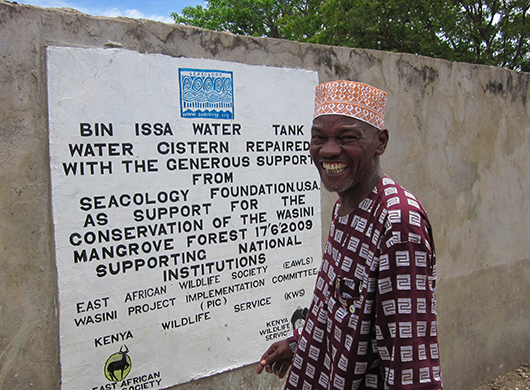
Omar Abdallah Juma, who has brought communities, governments, and fishermen together to protect Kenya’s great marine biodiversity, is the recipient of the 2020 Seacology Prize.
East Africa’s coast and islands are home to thriving coral reefs, dense mangrove forests, and seagrass beds–all of which have been strained by rapid population growth, overfishing, and poor regulation. Kenyan communities are responsible for conserving their local marine resources, but historically, few of them took action.
In recent years, however, communities have stepped up, thanks in large part to the efforts of people like Mr. Juma. He brokered lasting conservation partnerships between Kenya’s government, NGOs, and the communities of Wasini Island.
A lifelong resident of the island, Mr. Omar, as he’s known locally, was an early proponent of a community marine reserve there. As a leader of the Wasini Beach Management Unit (BMU), the community organization that manages local marine resources, he worked for years with island residents, government entities, and local environmental leaders, including 2014 Seacology Prize recipient Ali Shaibu Shekue, to establish a 2700-acre marine protected area. The reserve stabilized local fish populations and has become a model for locally managed conservation.
The area is also increasingly popular with divers, snorkelers, and other tourists from Kenya and beyond. Resource-based tourism now provides well-paying jobs for more than 100 residents, many of them youths with few other employment opportunities. Usage fees bring in much-needed revenue, and the Wasini BMU has become the only community-run fishing organization in the area to generate enough revenue to run its day-to-day operations.
“Local communities hold the key to sustainable management and conservation of natural resources,” said Dishon Murage, who has served as Seacology’s field representative in Kenya since 2008 and worked closely with Juma. “Working with local heroes like Mr. Omar Abdallah teaches us how local practices can enhance management and conservation.”
Juma’s work was not easy. Earlier in his career, some members of the fishing community vocally opposed his efforts to create the Wasini reserve, fearing that new restrictions would put their livelihood at risk. At one point he was even threatened with eviction from his home village over his advocacy for conservation. His commitment to transparency and accountability led to conflicts with corrupt individuals.
But by clearly communicating the long-term benefits of conservation to stakeholders on Wasini, he forged a lasting coalition to restore and protect the island’s environment. Wasini’s achievements have been featured in national and international media, and received numerous awards. In 2012, Juma was invited to attend the World Conservation Congress in South Korea as an authority on locally managed marine areas.
In 2014, under Juma’s direction, the reserve launched East Africa’s first coral-restoration initiative. The program is now being widely replicated along the country’s coast. Building on the success of the Wasini marine reserve, Juma has played a crucial role in the establishment of seven other reserves in southern Kenya.
Juma has been a frequent partner in Seacology’s work on Wasini Island. To help address water shortages, Seacology, working with the Wasini women’s group, funded rainwater cisterns that collect and store thousands of gallons of rainwater. They are crucial to the community in dry seasons, especially as climate change makes droughts more frequent. With the BMU, Seacology funded traditional fish traps that let immature fish escape. We have also funded investments in ecotourism, including repairs to a boardwalk through the island’s expansive mangrove forest.
“I feel very proud and happy,” Juma said. “I believe the award will showcase my ability to work with the communities. It will empower and encourage me to put more effort into doing conservation activities on Wasini Island. Seacology has shown how it cares about the welfare of others, and I just want to express my gratitude to the organization.”
Peter Kallang
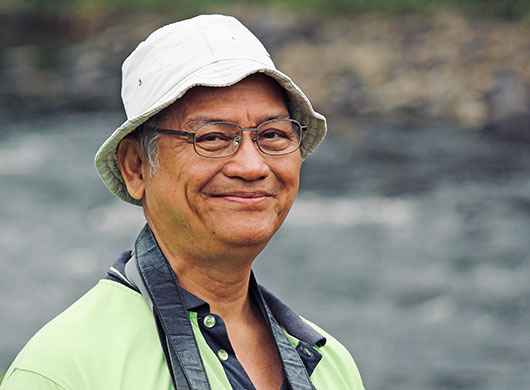
Peter Kallang, a member of Sarawak’s indigenous Kenyah community, led a successful campaign to halt the building of a series of mega-dams on Borneo. The dams would have flooded vast tracts of land, including pristine rainforests, and dislocated tens of thousands of indigenous people.
The Malaysian state of Sarawak is home to some of the world’s most critically endangered and biodiverse forests. Indigenous communities, including the Kenyah, Kayan, and Penan, have lived in harmony with their environments for generations. Now, however, they face encroachment by timber companies and palm oil plantations. A huge threat came from Sarawak’s industrialization plan, which included 12 mega-dams – the Sarawak Corridor of Renewable Energy (SCORE). The plan included the Baram dam, which would have, without consulting local people, displaced 20,000 Kenyah people and flooded 400 square kilometers of rainforest.
Mr. Kallang has been a lifelong campaigner for the people of Sarawak. In 2011, when he was 61, he became the Chairman of Save Rivers, a Sarawak NGO. He immediately focused on stopping the Baram dam. With the support of community leaders, he galvanized protests and demonstrations, including river flotillas in towns and remote rural areas. The largest of these protests were two concurrent two-year blockades. One blockade prevented construction of an access road to the proposed site of the Baram dam, and the other stopped all work at the site. Simultaneously, Mr. Kallang was raising awareness and building coalitions internationally, and confronting investor audiences in Australia and Norway.
Mr. Kallang also enlisted experts to prove to government and international funders that a better future lay with small-scale renewable energy projects. These eco-friendly projects would provide long-term community and environment benefits, rather than mass displacement and environmental destruction. In 2016, the government capitulated, and canceled the Baram dam.
Patricia Lamelas
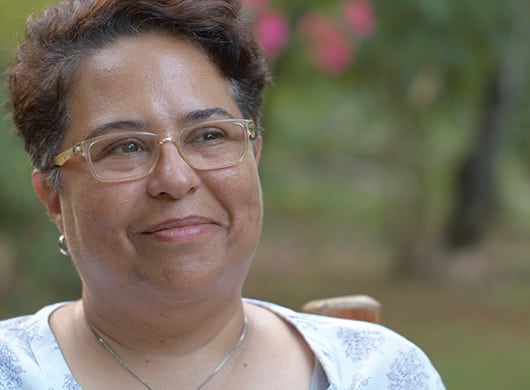
Patricia Lamelas has worked with the nonprofit CEBSE, the Center for the Conservation and Eco-Development of Samaná Bay and Surroundings, for more than 25 years. Her voice has been influential in the movement to conserve the rapidly changing region. She has advocated for protection of the bay, which is home to countless bird species and an important breeding and birthing ground for humpback whales.
Awareness of the importance of mangrove forests is now growing worldwide, but Ms. Lamelas was ahead of the curve, having worked for the preservation of these vital ecosystems for more than two decades. At CEBSE, she has worked with local communities, where many people relied on cutting mangroves for charcoal, to find sustainable livelihoods. She has helped to secure legal protections for mangroves, established the first mangrove nursery in the province, and led programs to educate many Dominican youth about their local environment and climate change. CEBSE is a valuable partner in one of Seacology’s first projects in the Dominican Republic, working to promote ecotourism and protect mangroves in the community of Las Garitas.
Gina Lopez
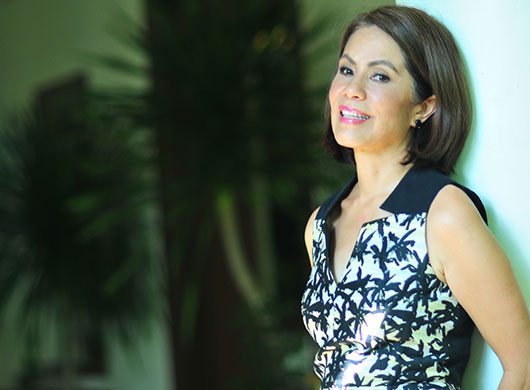
Regina Paz (Gina) Lopez of the Philippines was awarded the 2017 Seacology Prize in recognition of her untiring environmental advocacy in the face of powerful opposition.
Ms. Lopez, who passed away in 2019, was an outspoken champion of social and environmental causes in the Philippines. When she spearheaded the rehabilitation of the badly polluted Pasig River and nearby urban streams, she was named to chair the Pasig River Rehabilitation Commission. Her efforts there led to the cleanup of at least 17 tributaries in the Pasig river system.
She also led a campaign to save La Mesa Watershed, a once-neglected area that contains the last remaining rainforest of its size in Metro Manila, as well as the reservoir from which 12 million people get their drinking water. It is now La Mesa Ecopark, a tree-lined park where urban dwellers can hike, fish, and ride mountain bikes or horses.
As a leader of the Save Palawan Island movement, Ms. Lopez lobbied against the environmental ravages of mining on Philippine islands. Her stance drew angry criticism from the powerful mining industry.
That criticism intensified in 2016, when Ms. Lopez became acting secretary of the Philippines Department of Environment and Natural Resources (DENR). She established the first-ever forums for consultations between the DENR and indigenous groups, and shut down illegal fish pens in the country’s largest lake. But her strongest actions were directed squarely at mining operations, especially heavily polluting nickel mines. She banned open-pit mines and moved to shut down more than half of the operations of the country’s mining companies.
These bold actions cost Ms. Lopez her job. In May 2017, the members of a congressional commission on appointments—some of whom had ties to the mining industry—voted her out. But inside government or out, she vowed to keep fighting. She had already started I LOVE (Investments in Loving Organizations for Village Economies), to lift Filipinos out of poverty by building green businesses at the grassroots level.
Accepting the Seacology Prize, Ms. Lopez said, “The Philippines is a country of 7,000 islands, and I hope this award will affect the entire country. And because the Philippines has so many diverse ecosystems, and so many animals and plants that occur nowhere else, saving our islands has direct global impact as well.”
Irma Brady
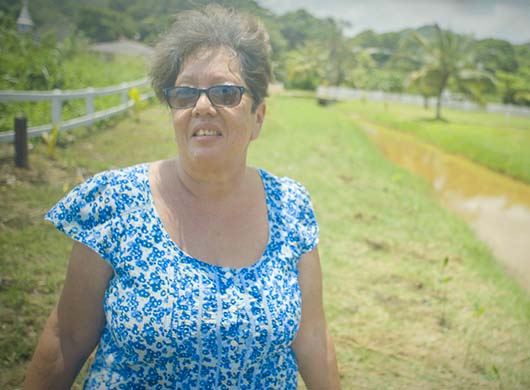
Over the past two decades, Roatán, the largest of Honduras’ Bay Islands, has experienced an unprecedented boom in tourism, and today it is a popular destination for large cruise ships, scuba divers, and other visitors. While the development has provided economic benefits for many of Roatán’s people, it has also threatened the island’s sensitive Caribbean ecosystems. Slash-and-burn agriculture on the island has led to massive loss of forest, air quality problems, and coastal runoff. Ms. Brady, a lifelong resident of the islands, became increasingly concerned about these growing threats and took action. In 1992, she founded the Bay Islands Conservation Association, a grassroots NGO designed to promote the sustainable use of the island’s resources, monitor environmental impacts, and ensure that development doesn’t come at the cost of irreplaceable habitats. BICA has grown in scope and influence over the years, and now has chapters on both Utila and Guanaja, Roatán’s neighboring islands. It also manages the Sandy Bay West End Marine Reserve, the site of our most recent project in Honduras.
Serving as a field evaluator, Ms. Brady has long worked with the local and national Ministry of Environment to certify proposed development projects on Roatán as sustainable before they are approved. She has helped save Roatán’s remaining coral reefs, mangroves, and other critical coastal environments from poorly designed developments. Her role has often brought her into conflict with developers and politicians, but her tenacity, knowledge of the issues, and broad community support have repeatedly won out and helped foster a culture of sustainability on the Bay Islands. Her other projects include the Port Royal Wildlife Refuge, a terrestrial wildlife preserve and the Carambola Botanical Garden, which offers free tours to local children to build appreciation for Roatán’s unique flora.
It’s not lost on us that Ms. Brady hails from Honduras, a country in which environmental activists have faced enormous risks in pursuing their convictions. Earlier this year Berta Cáceres, a longtime campaigner against environmental destruction and for indigenous rights and winner of the 2015 Goldman Environmental Prize, was killed in her home. The tragic act is widely suspected to have been a politically motivated assassination. Four months later another activist, Lesbia Yaneth Urquía, met the same fate after years of activism against the destructive hydroelectric project Cáceres had opposed. These high-profile crimes highlight the particular threats faced by activists in Honduras, which leads the world in violence against environmentalists, political dissidents, and others. In recognizing Ms. Brady, we hope to draw greater attention to the plight of those who take grave risks to stand by their principles and bravely speak up for their homelands and communities.
Lakshmi Moorthy
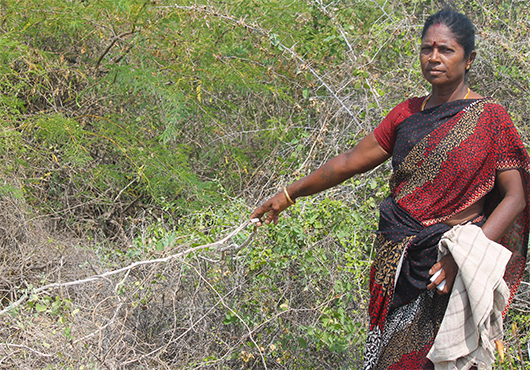
Since childhood, Lakshmi has worked in the Gulf of Mannar as a seaweed harvester, a subsistence living for many of the women of her community. In 2002, that livelihood came under threat as the government, in a well-meaning but poorly designed action, began enforcing a marine reserve in their traditional harvesting grounds. The women’s boats and even food and water were confiscated, sometimes by corrupt officials who demanded bribes to return them.Lakshmi helped organize the displaced workers into a federation, of which she became president. After a long period of negotiation with government representatives, NGOs, and conservation scientists, the group struck an agreement to protect both the environment and women’s livelihood. In 2014, the government agreed to recognize the Gulf of Mannar seaweed collectors as a unique group of women fishers and issued them biometric ID cards, to protect them from harassment by officials. They are now free—within the restrictions they themselves have imposed—to safeguard the resource and to pursue their livelihood.
"Professor" Ali Shaibu Shekue
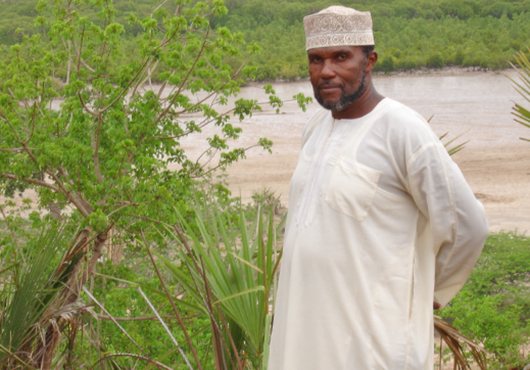
Though not a professor in the literal sense, the late Ali Shaibu Shekue was recognized throughout Kenya for his knowledge and skill pertaining to artisanal fisheries. He was among the few remaining old fishermen, and throughout his lifetime witnessed people being dispossessed from their fishing grounds and the loss of traditional fisheries management practices. As a result of these changes, Mr. Shekue observed a drastic decline in fisheries resources, the destruction of habitats, and an increase in illegal fishing activities. Rather than remaining silent, he began working to mobilize local communities, and in 2002 the first community-managed marine protected area in Mkokoni, Kiunga, was created because of his efforts.
Mr. Shekue’s oratorical skills and unmatched knowledge of the local fisheries gave him a distinct advantage when talking to communities. He was later appointed to various positions, including Chairman of the Kiweni Project Implementation Committee, which is in charge of a Seacology-funded community marine protected area. He also edited and published Mwambao, a quarterly newsletter written in Swahili, and worked to document and encourage the use of traditional fishing practices.
The professor passed away in 2015, and is remembered fondly in the communities where he worked.
Marie Saleem
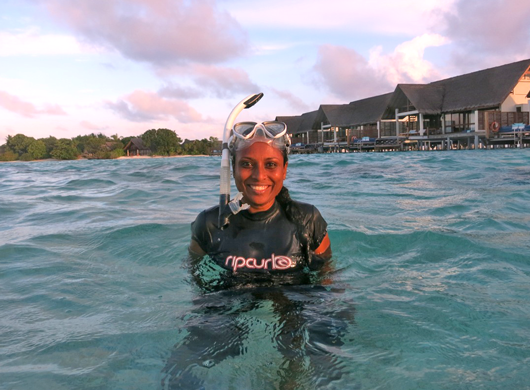
Marie Saleem is a leading environmental conservation advocate whose research and activism have helped protect marine species in her home country of the Maldives.
Her study of shark populations led to a nation-wide ban on shark fishing and the trade of shark products beginning in 2010. Most recently, she helped gain special protection measures for several shark and manta species under the Convention on International Trade of Endangered Species (CITES).
She also regularly conducts environment awareness classes for children, works with several island communities on waste management, and participates in coral mitigation programs. She and her husband founded an environmental consultancy through which they run “marine discovery centers” for Four Seasons resorts in the Maldives.
“I am honored and overwhelmed to be recognized for the humbling work I have done with the communities and the environment,” Ms. Saleem said when awarded the Seacology Prize. “The Maldives, being a small island state, is dependent on the pristine nature of its natural environment and I believe that it is only with the holistic intertwining of the peoples’ lives with nature that we can help the environment.”
John Aini
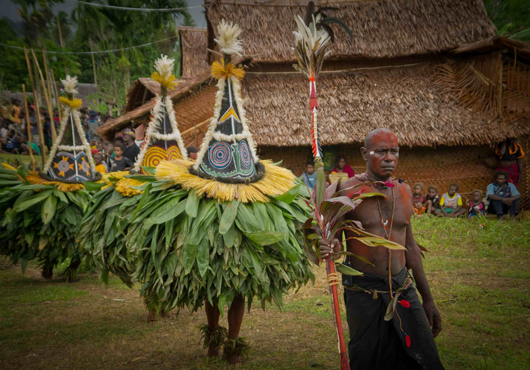
While working for the National Fishing Authority in the 1980s, Mr. Aini realized that the fish stock around his home province of New Ireland was on the decline. If this trend continued, he feared that the coastal villages on the islands in New Ireland Province who relied on the fish for their livelihood would be in trouble. As is often the case in developing countries, there were few effective institutions who could help. So Aini had to get creative. In his own free time, Mr. Aini began traveling by boat or truck to as many villages around New Ireland Province as he could, giving presentations on the need for villages to use their natural resources sustainably and resist harmful commercial fishing efforts.
In 1993, Mr. Aini formalized these “Awareness Roadshows” by launching Ailan Awareness (AA), an NGO that has grown to feature a variety of initiatives. AA now helps villages develop marine resource management plans, and the organization recently created the Marine Resource Management school to educate and inspire the province’s young people. By empowering coastal communities to manage the marine resources they depend upon, AA aims to protect both the people and reefs of New Ireland for future generations.
The impact of AA on the province has been profound, according to Dr. Bruce Harris, an anthropologist working in Papua New Guinea. “Ailans Awareness has contributed more than any other organization in New Ireland – private sector, civil society or governmental – to the preservation of marine resources for the benefit of the people who have lived in harmony with and depended on those resources for millennia,” said Dr. Harris.
“This award signals that the world recognizes our efforts to contribute in our little ways to sustaining our people’s livelihoods in changing and trying times,” Mr. Aini said. “Our sincere and most heartfelt gratitude on behalf of the people of New Ireland and Papua New Guinea for this recognition.”
Irman Meilandi
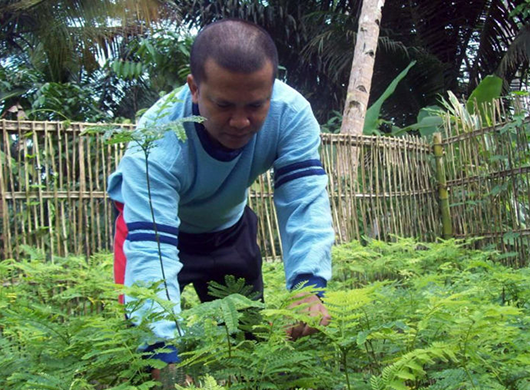
After spending years traveling across Indonesia pursuing environmental causes–first as an environmental journalist and later as an outreach coordinator for Conservation International Indonesia–Mr. Meilandi returned to his home village of Mandalameker concerned about the future of the surrounding rainforest. Loggers had already clear cut many acres, and the land had been left to fallow.
“For years I’ve worked with villages around eastern Indonesia on these kinds of issues,” said Mr. Meilandi. “The goal is always to see how people can live harmoniously with nature.”
He convinced villagers to protect over 250 acres of the rainforest, home to a variety of wildlife including the endangered Javan surili monkey. Next he helped the village revive 74 acres of degraded land by planting 12,000 native tree seedlings. In 2009, Mr. Meilandi collaborated with Seacology on a project to plant 15,000 more tree seedlings across an additional 72 acres while using Seacology funds to build a new community center. The community center was completed in the summer of 2011.
Rabary Desiré
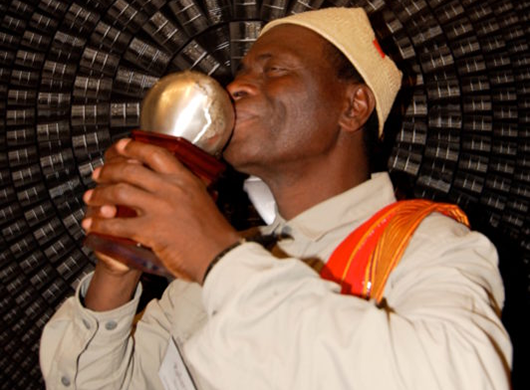
Rabary Desiré was awarded the 2010 Seacology Prize for his tireless efforts to further forest conservation in northeastern Madagascar.
Rabary Desiré is recognized by many as a major conservation leader in northeastern Madagascar, and is a highly-sought-after research/ecotourism guide. Mr. Desiré has almost no possessions (other than books and a little clothing) and shares his small traditional two-room residence with five other family members. With the money he makes from guiding, he buys forested land in order to protect it. Years of work have finally culminated in the establishment of his own small private nature reserve, Antanetiambo (“on the high hill”), likely the only reserve in northern Madagascar that has been entirely created from start to finish by a single local resident.
According to Mr. Desiré, “I am very happy to receive this award and I feel very lucky for myself and Madagascar. After many years of hard work and political instability, finally we are having some local conservation success. I plan to use these funds for such projects as reforestation, developing tourist infrastructure and purchasing the land around Antanetiambo Nature Reserve to increase the size of the reserve and the amount of protected land in this region. This award will help preserve the precious biodiversity and high endemism of Madagascar, as well as fight the ongoing battle against massive deforestation and possible extinction of many beloved species… Thanks Seacology for giving me this prize. The whole region will never forget it.”
Filip Damen
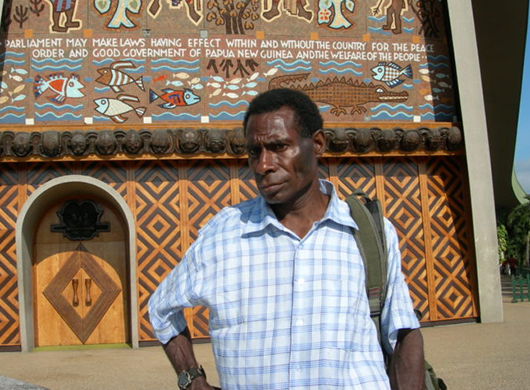
Filip Damen was awarded the 2009 Seacology Prize for his noble efforts to protect the lowland rainforests surrounding his home village of Wanang in Papua New Guinea.
Wanang is a small village surrounded by vast lowland rainforests. The villagers practice shifting agriculture, fish in the Wanang River and hunt for wild pigs and cassowaries in their forests. Ten years ago, when the entire area of Lower Ramu was proposed by the PNG government as a logging concession, Filip Damen, an unschooled rural subsistence farmer with deep respect for his forest wilderness and traditions, recognized the threat. He taught himself to read and write and led a group of 11 Wanang village clans to sign a historic conservation deed. This communal deed bound the clans in their refusal to allow loggers or the PNG government to exploit approximately 25,000 acres of their forests.
Ómar Ragnarsson
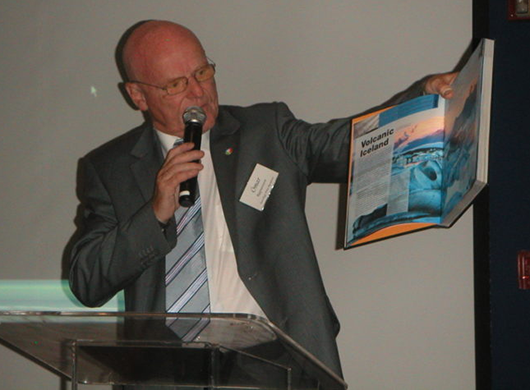
Ómar Ragnarsson was awarded the 2008 Seacology Prize for his efforts to draw attention to massive dam projects taking place in the remote interior of his home island, Iceland.
Through his reporting and independent filming, Ragnarsson has worked to raise public awareness of massive dam projects being undertaken in the remote interior of Iceland. A large US-based aluminum company persuaded Iceland to build major hydroelectric dams for the purpose of powering the transformation of bauxite into metallic aluminum. The bauxite will be shipped primarily from Australia, as Iceland is devoid of bauxite. Iceland’s first aluminum plant was built in the 1960s; there are now three, with plans for at least two more. Existing smelters rely on hydropower, but Iceland’s abundant geothermal features could also be exploited.
According to Mr. Ragnarsson, “I am very thankful if this prize can bring international attention to the immense value of Icelandic nature, one of the greatest wonders of the world, and let it be known what is at stake now when there are plans to build at least two new huge aluminum smelters in Iceland, that will together with three smelters that have already been built need all the geothermal and hydropower of this island, with huge and irreversible negative environmental impacts. I hope that this prize can help in the fight for preserving and protecting Icelandic natural treasures for future generations and the whole of mankind.”
Kokichi Kariya
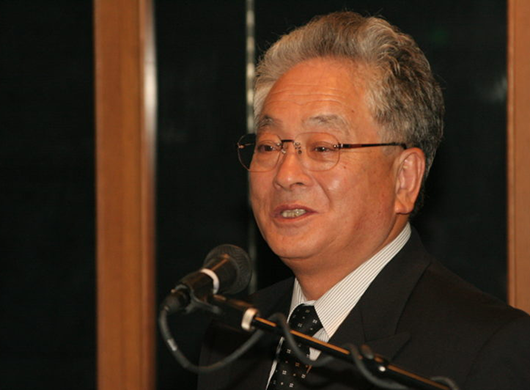
Mr. Kokichi Kariya was awarded the 2007 Seacology Prize for his efforts to save one of the few remaining ancient forests on Honshu Island, Japan. Mr. Kariya received the $10,000 Prize on October 3, 2007 at a ceremony in San Francisco, California.
After World War II, a logging industry began in Japan, mainly focused on deciduous trees including three to four hundred year old beech trees in the Aizu Mountains above Mr. Kariya’s home village of Fuzawa. In the 1960s, Mr. Kariya, fearing that lack of forest coverage could cause a devastating flood in his village, proposed that logging be halted. He endured harsh criticism from his fellow villagers, who feared they would lose their jobs if the logging stopped. Mr. Kariya and other concerned individuals formed a movement to advocate for the forest. In 1969, Mr. Kariya’s fears were realized when a flood devastated Fuzawa Village. In the ensuing decades, Mr. Kariya continued to work tirelessly to advocate for the protection of the beech forest.
Finally, after years of lobbying and education, the logging in the Aizu Mountains was halted. In 2000, the forest ministry decided to designate over 200,000 acres of the mountains as a protected area, the largest in Japan. In 2003, 2,300 acres of Fuzawa’s forest was designated a “Home Forest.” Thanks to Mr. Kariya’s selfless commitment, the beech forests are protected in perpetuity.
According to Mr. Kariya, “We have been protecting our forests for a long time. We are both surprised and moved that you valued our work and awarded us with honor. Forests protect human lives, nurture all living things, and sustain abundant oceans and beautiful earth. Now the earth is in danger. As more forests are destroyed, the land turns into a desert. We are determined to continue our work to protect forests for our mother earth and humankind in the future.”
Ketut Sarjana Putra
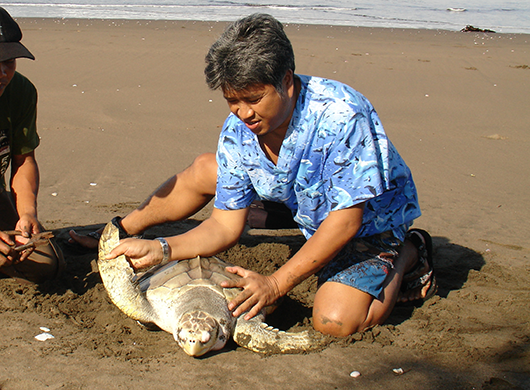
Ketut Sarjana Putra was awarded the 2006 Seacology Prize for his efforts to protect endangered sea turtles in his native Bali, Indonesia. Mr. Putra received the $10,000 Prize on October 18, 2006 at a ceremony in San Francisco, California.
According to Mr. Putra, “I am really delighted to receive this award and I am sure that this is not only for me but for Balinese people and their government who have been working very hard to adopt and implement the true turtle conservation and successfully putting them in the ground (from policies to practices). I am glad and proud to have been part of those efforts.”
Patrick Pate
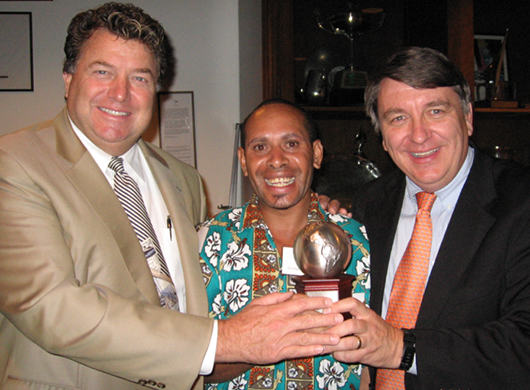
Patrick Pate was awarded the 2005 Seacology Prize for his outstanding efforts to organize local indigenous communities in the highlands of his native Papua New Guinea. Mr. Pate received the $7,500 Prize on October 25, 2005 at a ceremony in San Francisco, California.
“It is a great honor for me to be the recipient of the 2005 Seacology Prize,” said Mr. Pate. “It is a recognition for the hard work we all put to conserve the natural environment of Mt Bosavi, Papua New Guinea. This prize that I am receiving is not just for my work but the efforts of many others that have contributed their ideas and tremendous support towards conserving the environment against the existing threat from intensive logging. I feel that this prize has encouraged and shaped me to continue to work harder with my people the “Bosavians” in our struggle and effort to protect our rich environment for future generations.”
Dr. Felix Sugirtharaj
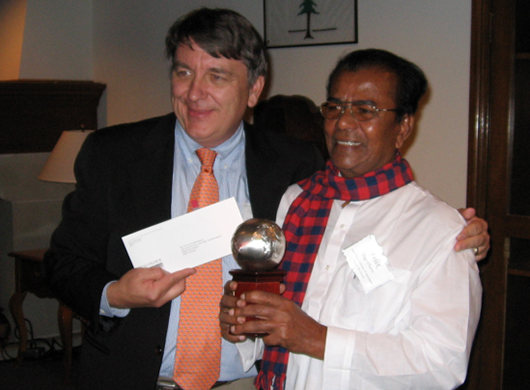
Dr. Felix Sugirtharaj was awarded a special Lifetime Achievement Award for his dedication in protecting the mangrove forests and livelihoods of fisherpeople in the Andaman Islands, and particularly for his tireless work coordinating relief efforts in the wake of the devastating December 26, 2004 tsunami. Dr. Felix also received a $7,500 award on October 25, 2005 at the ceremony in San Francisco, California.
“I am greatly honoured for being chosen to receive a special Lifetime Achievement Award,” said Dr. Felix. “When the west was discovering the outer space, the Islands in Andaman were making the inner journey into the evergreen forests and deep blue sea to discover the riches of God given nature. These people, having suffered at the beginning of this year by Tsunami and a series of earthquakes, have the ability and capacity to laugh at themselves and sublimate personal grief to a concern for humanity at large by saving the culture of rich biodiversity as precious as their lives. I once again rededicate my mission to the poor people who live around mangrove swamps to ensure food security with legal entitlement to land, water and forests.”
Adrian Lasimbang
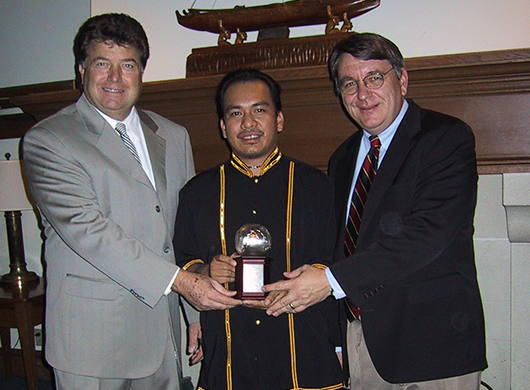
Adrian Lasimbang was awarded the 2004 Seacology Prize for his outstanding efforts to organize local indigenous communities and implement innovative alternative energy programs in his native Borneo, Malaysia. Mr. Lasimbang received the $5,000 Prize on October 12, 2004 at a ceremony in San Francisco, California.
“I am truly honored for being chosen to receive the Seacology Prize for 2004,” said Mr. Lasimbang. “This will greatly boost our motivation to continue our work effectively in communities in Borneo and the rest of Asia as a whole. I would take this prize not just for my work but also to the indigenous communities in Borneo for their efforts to conserve the environment from the intense threat from logging and mass expansion of oil palm plantations in our beautiful island called Borneo.”
Dr. Elisabeth Rabakonandrianina
Dr. Elisabeth Rabakonandrianina was awarded the 2003 Seacology Prize for her outstanding efforts to protect Madagascar’s “Orchid Mountain,” Mt. Angavokely, home to over 120 rare and endangered orchid species. Dr. Rabakonandrianina received the $5,000 Prize on November 17, 2003 at a ceremony in San Diego, California. Located 13 miles east of Antananarivo, the nation’s capital, Mt. Angavokely is a former French Forest Station and has one of the last remaining intact tracts of high-altitude rainforest in all of Madagascar. Dr. Rabakonandrianina has taken on the mission of saving the Orchid Mountain for future generations. In 2001, Dr. Rabakonandrianina successfully negotiated with the Malagasy government a legal framework for protection and sustainable development of Mt. Angavokely and the surrounding communities. In conjunction with Seacology and the local nonprofit organization ARC VERT, the government is establishing a 927-acre reserve on Orchid Mountain.
Meity Mongdong
Ms. Meity Mongdong of Sulawesi, Indonesia has worked tirelessly to save the mangrove forests and coral reefs of her native Bunaken National Marine Park while simultaneously improving park villager livelihoods. As both a founding member of the local marine conservation NGO Kelola and as community facilitation specialist for the Natural Resources Management Project in North Sulawesi, she helped develop a 25-year management plan for the park. Since 2000, she has worked closely with fishers and farmers from all 22 villages within the park to form and strengthen the Bunaken National Park Concerned Citizen’s Forum (FMPTNB).
Bunaken National Park is a 90,000-hectare marine reserve off the northern tip of the island of Sulawesi in Indonesia. Encompassing five islands and an expansive Sulawesi mainland section, Bunaken is located in the epicenter of global marine biodiversity and supports a wealth of endangered species such as green and hawksbill turtles, dugongs, coelacanths, and sperm whales. Bunaken is world-renowned amongst scuba divers for its stunning drop-off coral reefs teaming with brightly colored fishes. Its mangrove forests are among the most diverse in the world and harbor some of the largest mangrove trees in the northern hemisphere. Unfortunately, both Bunaken’s reefs and mangrove forests have come under increasing threat over the past decade as destructive fishing practices such as dynamite and cyanide fishing have become commonplace and mangrove cutting for charcoal production has increased.
In response to these threats, Ms. Mongdong has worked very closely with the fisher-farmer communities that live within the park borders to educate them on the importance of sustainable use practices and empower them to improve management policies and enforce the regulations governing the park. Ms. Mongdong helped to forge a joint patrol system between the FMPTNB and park rangers and water police, which has virtually eliminated bomb and cyanide fishing in the park over the last two years. With support from Seacology, Ms. Mongdong and the FMPTNB have also worked with villagers in the park to set aside “no-take” zones where fishing is not allowed in order to provide overexploited fish stocks with an opportunity to recover. A grant from Seacology to one of the villages Ms. Mongdong works with on Bunaken Island is funding the construction of a much-needed community landing dock, which will greatly facilitate daily operations of local fishers while removing intense pressure on the shallow reefs which have faced daily boat groundings and trampling for the past two decades.
Ms. Mongdong has worked particularly closely with those village women who are directly involved in resource-destructive activities such as mangrove harvesting for charcoal production and coral and shell collection for the tourist curio trade. She has worked to educate these women while also developing alternative livelihoods for them.
Anuradha Wickramasinghe
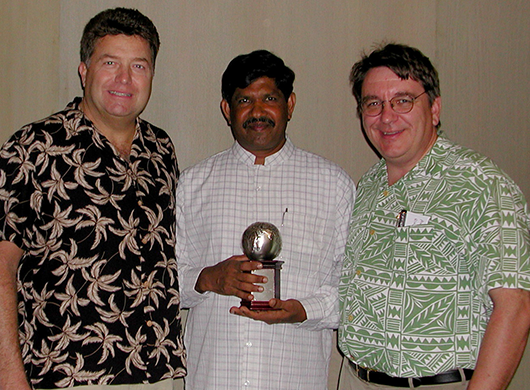
Anuradha Wickramasinghe of Sri Lanka was selected to receive the 2001 Seacology Prize for his outstanding efforts in mangrove conservation. Anuradha has worked in community-based natural resource management for the past 25 years. As the executive director of forestry, water resource management and conservation programs in the 1980s, he mobilized more than 1200 community leaders to conduct forest conservation campaigns in Sri Lanka. In 1991 Anuradha became one of the founding members and the first director of the Small Fishers Federation of Lanka (SFFL, now also known as Sudeesa), a fisher folk-based nongovernmental organization that represents over 20 percent of fisher folk communities on Sri Lanka.
Sri Lanka is a small but biologically diverse island nation located in the Indian Ocean. Despite its size, Sri Lanka has an exceptional amount of mangrove species diversity and contains over half of the mangrove species found on the world’s islands. In response to threats to Sri Lanka’s mangroves, Anuradha and SFFL developed a mangrove conservation program in 1994. Since that time more than 100,000 seedlings have been planted in degraded lagoon areas of Sri Lanka.
With support from Seacology, Anuradha and SFFL have expanded their program and established the Kiralakele mangrove conservation program on Sri Lanka’s severely degraded southern coast. Working very closely not only with traditional fishermen but also with the active fisherwomen community, Anuradha created a program that combines rehabilitation of degraded mangrove areas with the establishment of a mangrove arboretum as an eco-tourism project, and the construction of the south coast’s first mangrove resource center. This new center is providing training for 800,000 school children in Southern and Uva provinces and is benefiting thousands of fisher folk.
In 2015, Seacology launched the nationwide Sri Lanka Mangrove Conservation Project in collaboration with SFFL, still under Anuradha’s leadership.
Doris Matsuda-Saromines and Edwin "Take" Matsuda
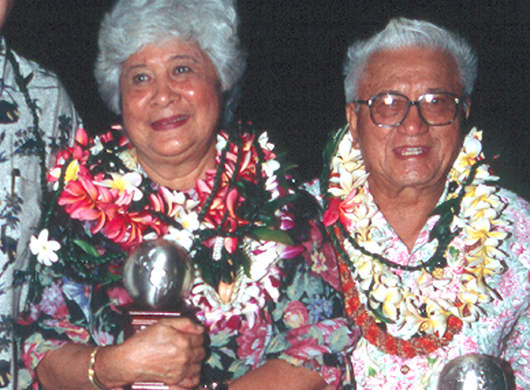
This brother and sister pair received the Seacology Prize for their commitment and sacrifice associated with the restoration of the Pi’ilanihale heiau in Hana. The Matsuda family is the inherited owner of the land that encompasses Pi’ilanihale, Hawaii’s largest heiau (a man-made, elevated platform associated with ritual activity in the Pacific Islands). The heiau is an extraordinary example of ancient Hawaiian drywall masonry and is internationally renowned.
In the 1960s, a local rancher, claiming partial ownership of the property on which the heiau is located, successfully applied to have Pi’ilanihale designated as a National Historic Landmark. Under the leadership of Mileka Kahanu (mother of Doris and Take), the family formed a nonprofit called Ho’olina Kahunu Hui to oversee the changes that were about to take place. The 60-acre site was dedicated as an NHL in 1970, and the heiau was cleared and mapped by an archaeologist. In 1972, the National Tropical Botanical Garden (NTBG) was granted the land for the creation of the Kahanu Garden, to insure that the heiau would be properly cared for in perpetuity. By granting their nine-acre parcel, the Matsuda family sacrificed large sums of money that would have resulted from the land’s sale to developers along this spectacular coastline. Doris worked diligently to insure that the NTBG fulfill their promise to complete the restoration of the heiau. In April 1999, the NTBG and Ho’olina Kahunu Hui celebrated the completion of the Pi’ilanihale Heiau Restoration Project, the crown jewel of the Kahanu Garden of Maui.
Madison Nena

Nena was awarded the Seacology Prize for his longtime commitment to protecting Kosrae’s environment. After working to promote sustainability and ecotourism from within Kosraen government, Nena played a pivotal role in the establishment of the Utwa-Walung Conservation Area. This Conservation Area now protects important rivers, mangrove swamps, coral reefs, and marine resources crucial to livelihoods of local residents. When the Conservation Area was threatened by an unsustainable development project, Nena facilitated community education and dialogue, ultimately convincing local landowners to sacrifice their short term gain in favor of protecting the long term sustainability of local ecosystems. In addition, Nena has promoted cultural conservation through helping to revitalize historic methods of both house and boat construction.
Saula Vodonaivalu, Sr.
Vondonaivalu was honored for his work to conserve the flora and fauna of his native country. Beginning as a young man assisting British foresters over thirty years ago, he has discovered over 30 new species of plants. Two species – one fern and one flowering plant – have been named after him.
Mary Thomas
Mary Thomas, an elder of the Secwepemc tribe, was chosen to receive the Seacology award for her heroic efforts to protect the salmon fisheries and watersheds of her tribal lands.
His Majesty King Taufa'ahau Tupou IV
His Majesty was honored for his efforts in protecting the flying foxes of Kolovai village. In Kolovai, several hundred endangered flying foxes roost and forage safe from interference or danger. As a result, the flying foxes hang in village trees and can be observed from a close distance. Seacology scientists have determined that flying foxes are the major pollinators and seed dispersers of tropical rainforest ecosystems in the Southwest Pacific, so Seacology has been deeply involved in their conservation. The King was also recognized for his efforts to protect the rainforests and indigenous culture of Tonga.
Governor A.P. Lutali
Governor Lutali was awarded for his efforts to create the National Park of American Samoa, a 9,000-acre park that includes four separate islands separated by 60 miles of ocean. He played a key role in working with Samoan chiefs and the U.S. Congress to create agreements regarding the park that were in keeping with the wishes of the Samoan people. As well, Governor Lutali helped to pass landmark legislation to protect Pacific Island Flying Foxes. The remarkable park is home to the only live coral reef in a national park in the entire world.
Chief Va'asilifiti Moelagi Jackson
Va’asilifiti was honored for her efforts in creating Fa’asao Savai’i, one of the first indigenous conservation organizations in the South Pacific. Through her efforts, more than 50 villages have joined the organization. Va’asilifiti required creation of a village rainforest preserve as the admission price from all villages that wished to join. The resultant patchwork of reserves throughout her home island of Savai’i proved so frustrating to the loggers that they gave up and left.
Chief Fuiono Senio
Chief Senio was awarded the Seacology Prize for his courageous efforts in saving a 30,000-acre rainforest, thereby creating an indigenous-controlled reserve. Falealupo Village chiefs, driven to let logging companies into their forests only because they had no other way of raising funds for a badly-need school, were approached by Seacology cofounder Paul Cox, who said that he would raise funds for the school if the chiefs promised to leave their rainforest intact. Chief Fuiono ran six miles to stand in front of the bulldozers and ordered the loggers to stop. Even after a hurricane impoverished the village, Chief Senio refused any overtures from the loggers. Seacology provided the funds to rebuild the school, as well as construct an aerial rainforest canopy walkway to provide ecotourism revenue to the village. The village chiefs recently decided to use revenues from the walkway to fund a modest retirement fund for elderly villagers (see October 1999 newsletter article).
Chief Fuiono Senio passed away in 1997, shortly after receiving the Goldman Environmental Prize with Paul Cox.
Chief Ulu Taufa'asisina Tausaga
Chief Ulu courageously honored a pledge made on his father’s deathbed to protect the rainforest of his home, Tafua village. He resisted the overtures of loggers for over a decade, despite the village’s need for revenue. Chief Ulu has also stood for the rights of Tafua villagers to make their own decisions and control their own destinies. He is cofounder of Fa’asao Savai’i, a truly indigenous conservation organization working to protect the environment and culture of the island of Savai’i.